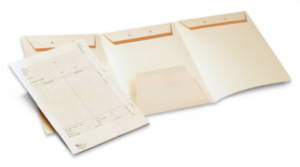(Update: you can now register for Design Day 2022. See blog article.)
A date has been tentatively set for USPTO’s Design Day 2022. The date is Thursday, April 21, 2022. Continue reading “Save the date! USPTO Design Day 2022”

Bluesky: @oppedahl.com
(Update: you can now register for Design Day 2022. See blog article.)
A date has been tentatively set for USPTO’s Design Day 2022. The date is Thursday, April 21, 2022. Continue reading “Save the date! USPTO Design Day 2022”

What a walk down memory lane! In one of the patent practitioner listservs, a member today asked where they could purchase heavy-duty trifold patent file folders. Continue reading “Trifold patent file folders”
 It was fun to see the 2021 trademark registration toteboard getting mentioned on social media within mere minutes of when the toteboard got posted. You can see it here on LinkedIn:
It was fun to see the 2021 trademark registration toteboard getting mentioned on social media within mere minutes of when the toteboard got posted. You can see it here on LinkedIn:
Cantor Colburn LLP is proud to be top ranked in 2021 for patents and trademarks: #4 for utility patents, #5 for design patents, and #6 for trademarks.
[…]
We also thank Harrity & Harrity, LLP Analytics for patent data and Carl Oppedahl’s Ant-like Persistence Toteboards for trademark data.

Today China deposited its instrument of accession to the Hague system, the international system for protection of industrial designs. The Hague system will take effect for China on May 5, 2022. Continue reading “China joins the Hague system”
Here are the results for the 2021 US Tote Boards.
The firm ranked first in filing of granted US plant patents in 2021 is Randall | Danskin. The runner-up is Koenig IP Works, PLLC. This is the third annual US Plant Patent Tote Board.
The firm ranked first in filing of granted US design patents in 2021 is Banner Witcoff. The runner-up is Birch, Stewart, Kolasch & Birch, LLP. This is the tenth annual US Design Patent Toteboard.
The firm ranked first in filing of granted US utility patents in 2021 is Oblon, McClelland, Maier & Neustadt, L.L.P. The runner-up is Sughrue Mion PLLC. This is the seventh annual US Utility Patent Toteboard.
The firm ranked first in filing of granted US trademark registrations in 2021 is Fross Zelnick Lehrman & Zissu, P.C. The runner-up is Muncy, Geissler, Olds & Lowe, P.C. This is the seventh annual US Trademark Registration Toteboard.
To see the 2021 US utility patent toteboard, click here.
![]() Several alert readers have pointed out to me a typographical error in yesterday’s blog article Welcome developments with DAS – Denmark. I incorrectly indicated that DPTO’s effective date for becoming an Accessing Office and a Depositing Office for utility models was September 17, 2021. The correct date was November 30, 2021. The first kind reader to spot this error and to report it to me was Debra Collier, located in Switzerland. Prompted by her I have corrected the blog article. Thank you to Ms. Collier!
Several alert readers have pointed out to me a typographical error in yesterday’s blog article Welcome developments with DAS – Denmark. I incorrectly indicated that DPTO’s effective date for becoming an Accessing Office and a Depositing Office for utility models was September 17, 2021. The correct date was November 30, 2021. The first kind reader to spot this error and to report it to me was Debra Collier, located in Switzerland. Prompted by her I have corrected the blog article. Thank you to Ms. Collier!
Sign up to attend a webinar on February 10, 2022, at 3 p.m. (Central European Time) about Best practices for recording of changes (Rule 92bis).
The speakers will be:
To register, click here.
 This is a busy time for good news about DAS.
This is a busy time for good news about DAS.
The last time I blogged about Georgia and DAS was on March 20, 2019 (see article). At that time, the news was that Georgia had joined the DAS system.
Now the news is that Georgia has joined the DAS system as an Accessing Office and as a Depositing Office with respect to trademark applications. This took effect as of September 17, 2021.
![]() (Corrected on February 3, 2022 to show that the effective date is November 30, 2021, not September 17, 2021.)
(Corrected on February 3, 2022 to show that the effective date is November 30, 2021, not September 17, 2021.)
This is a busy time for good news about DAS. One piece of good news about DAS is that the Danish Patent and Trademark Office (DPTO) became an Accessing Office and a Depositing Office in DAS for utility model applications on November 30, 2021.
DPTO was already a Depositing Office for national patent applications and RO/DK was already a Depositing Office for PCT applications. And DPTO was already an Accessing Office for national patent applications. The big news here is that DPTO recently became both an Accessing Office and a Depositing Office for utility model applications.
This offers a reminder for those readers who are perhaps not as familiar with utility models as with other forms of intellectual property protection. It reminds us that Denmark offers utility model protection. WIPO has a very helpful web page that discusses utility models and lists the seventy-six Offices where utility model protection is available.